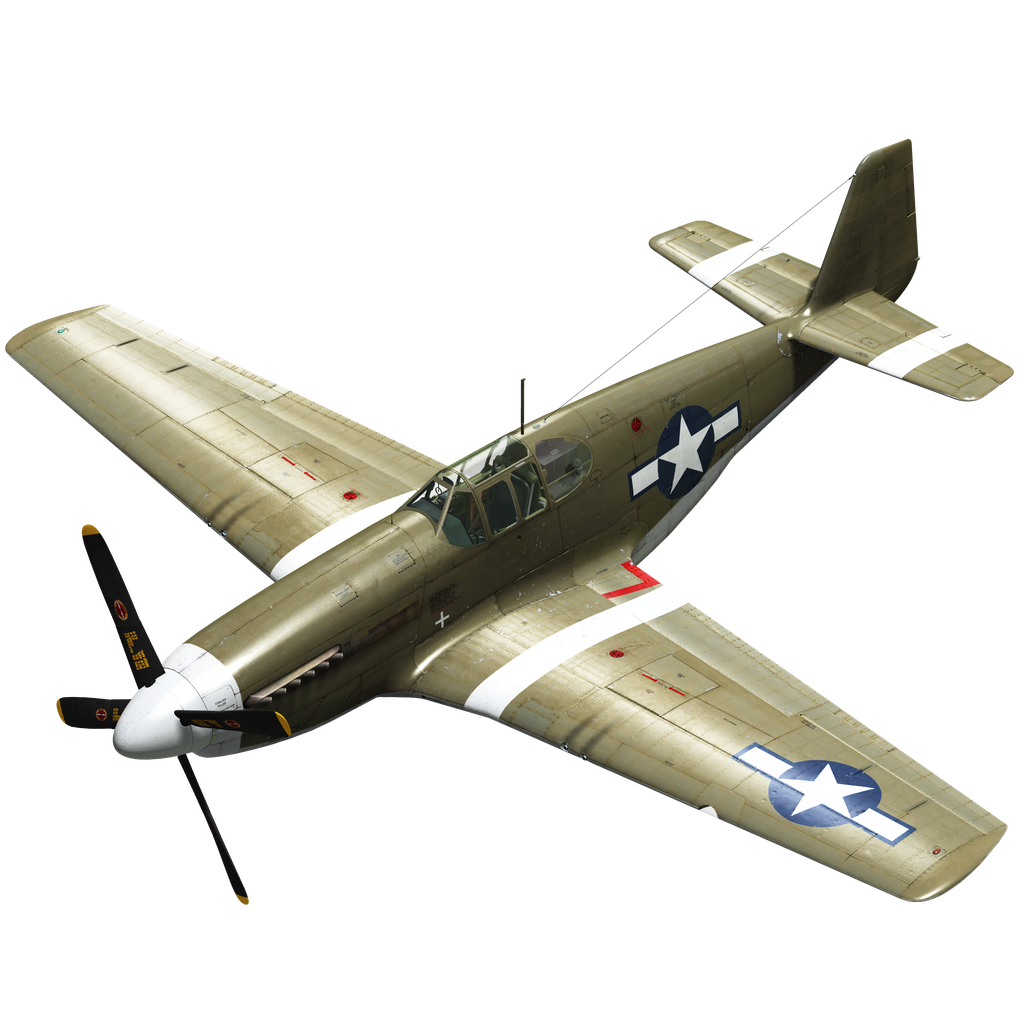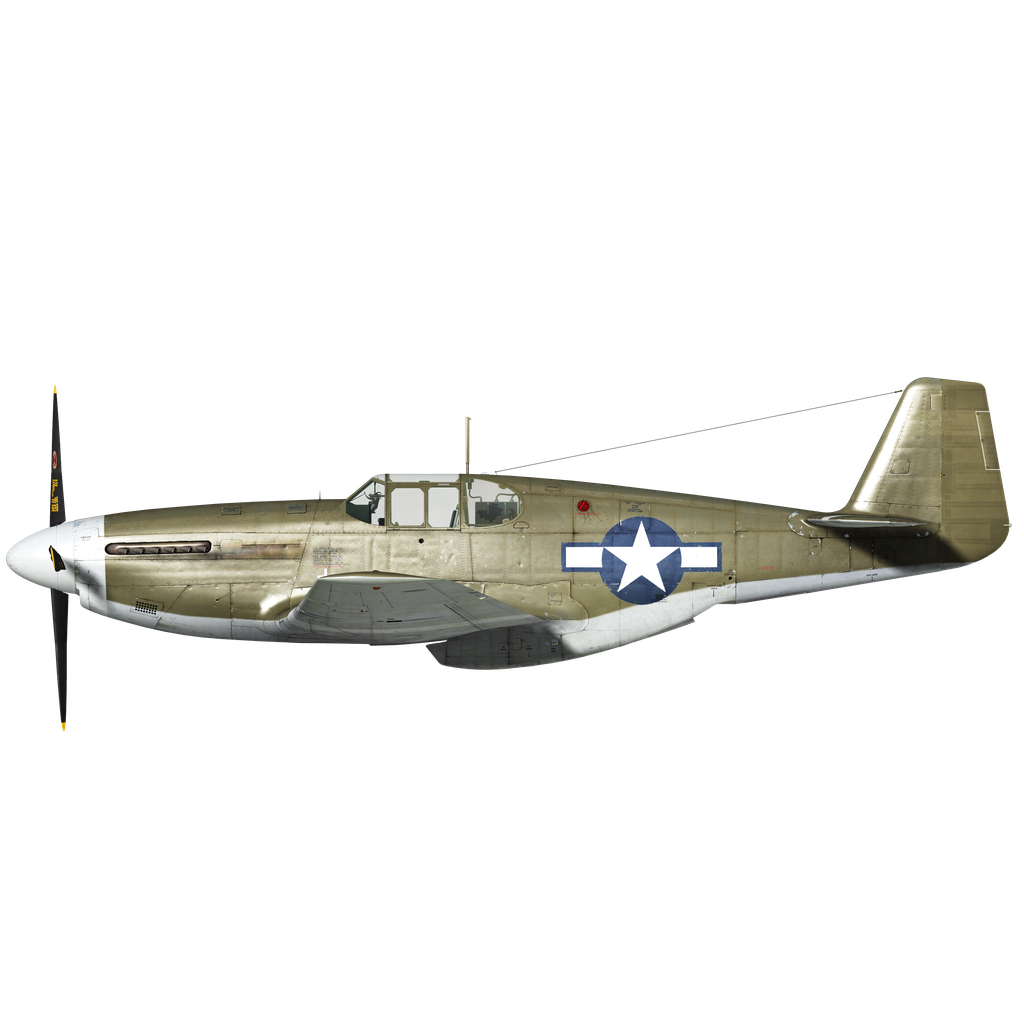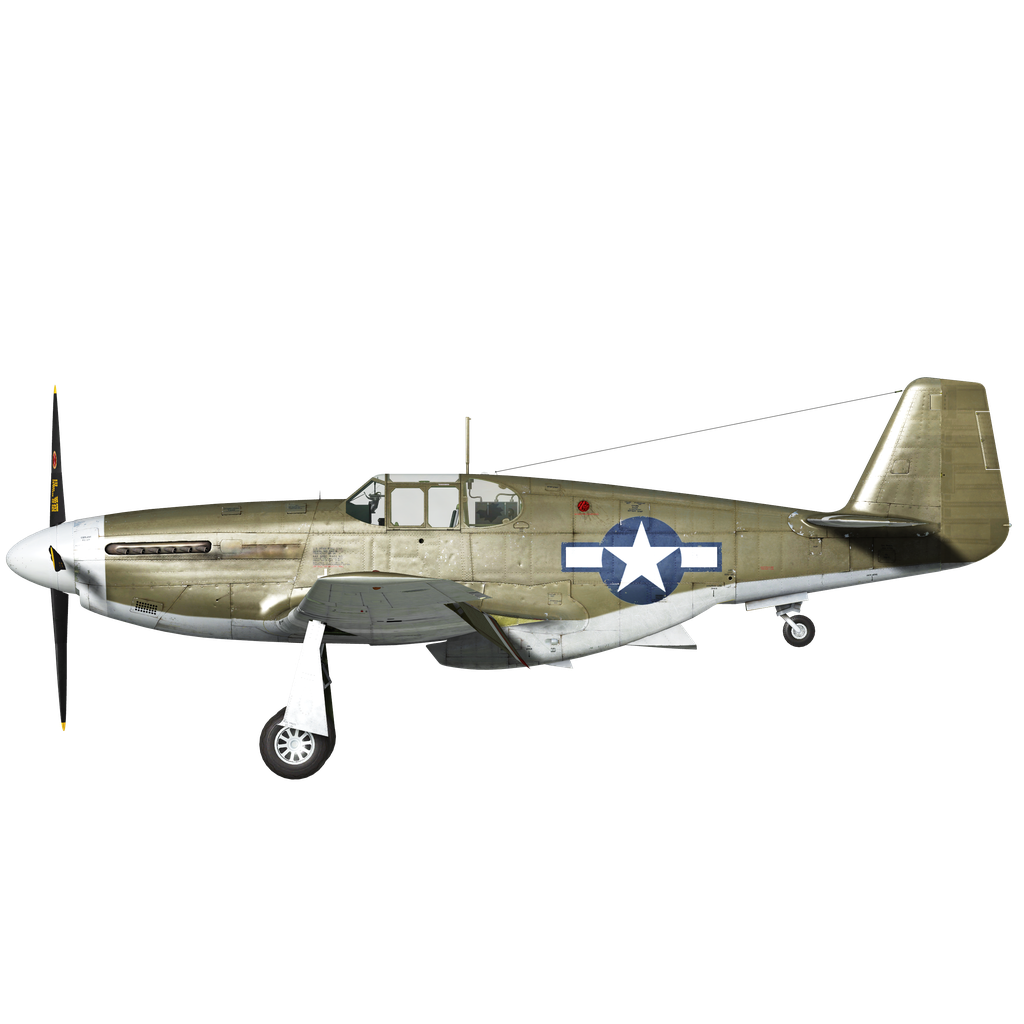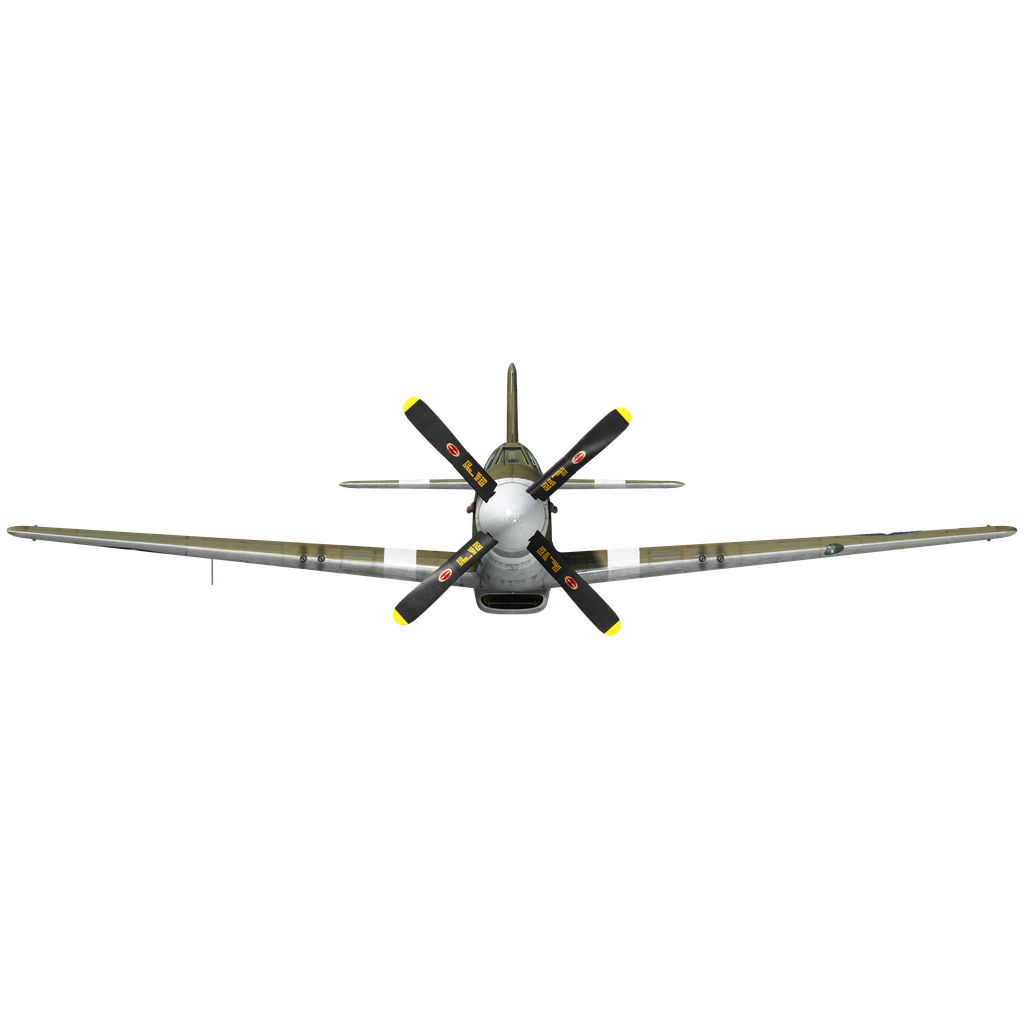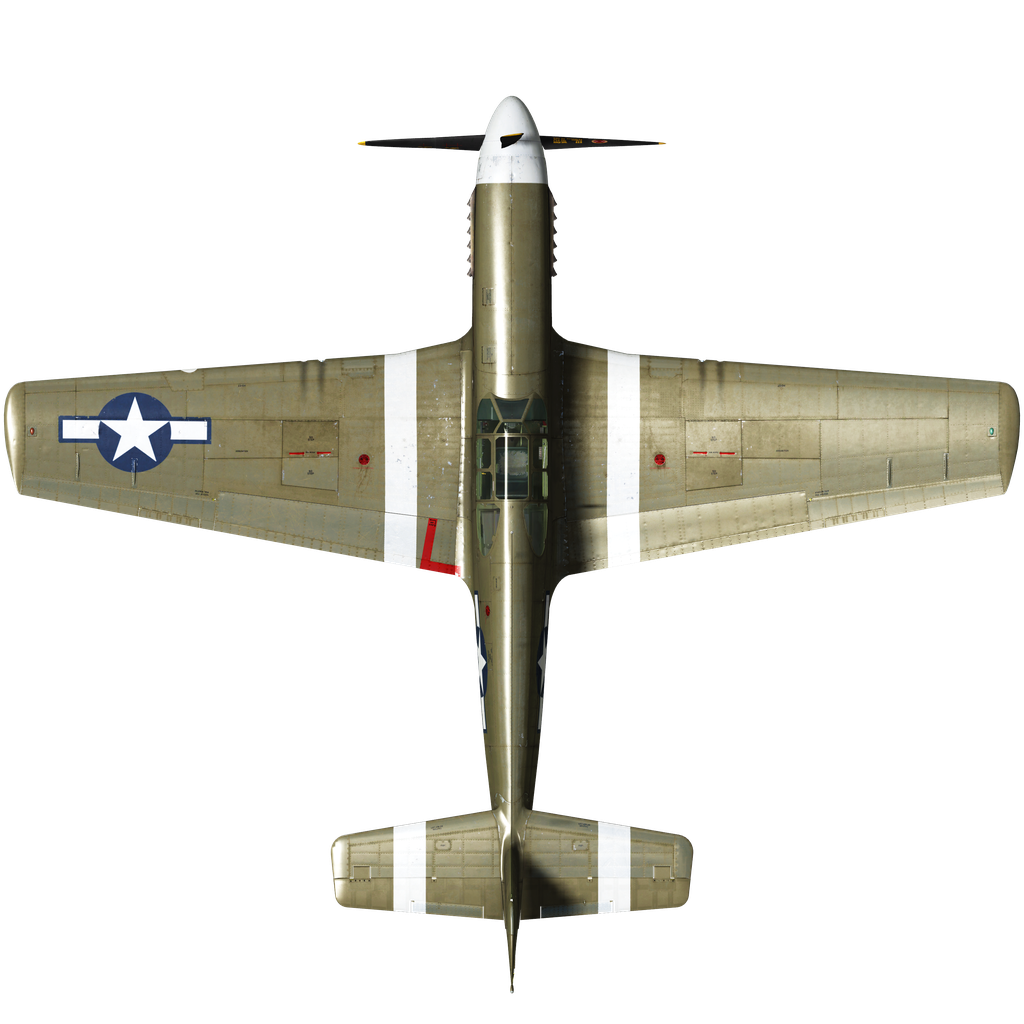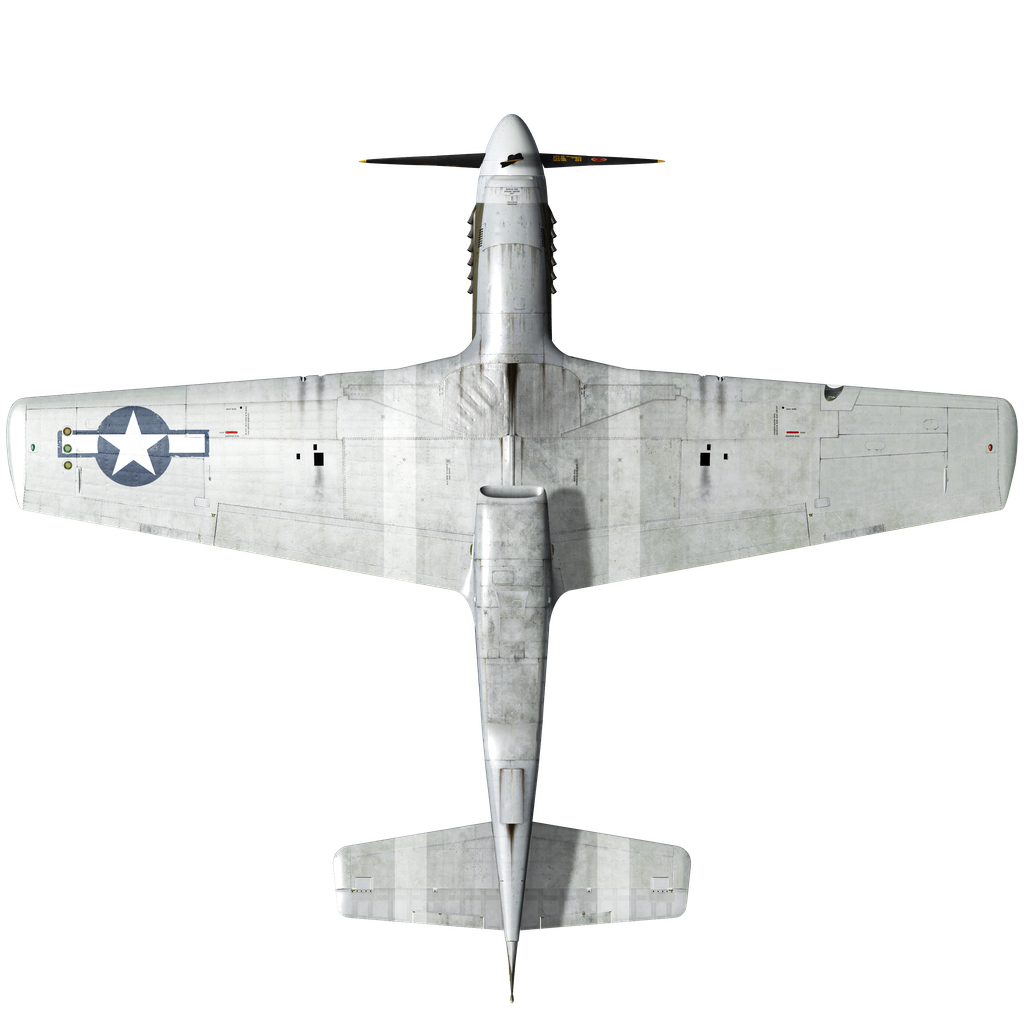In 1940, the British offered North American Aviation the opportunity to produce the P-40 fighter for Great Britain under license from Curtiss, but North American representatives proved that they could quickly develop and produce a more advanced aircraft of their own design. In late 1940, the prototype of the new NA-73 fighter was built, and in April 1941, the first production aircraft was produced, known in Great Britain as the Mustang I.
The main drawback of the aircraft soon became apparent, related to the low-altitude Allison engine installed on it: having excellent characteristics at low levels, the aircraft lost all its advantages as it climbed higher — so the first aircraft were used as attack and reconnaissance aircraft. But high-altitude fighters were needed, and so it was decided to install a high-altitude British Merlin engine on the Mustang. The Americans, having learned of this work by the British, decided to do the same and purchased a license to produce these engines. The result of the installation of this engine was the P-51B (NA-101), the prototype of which took to the skies on October 30, 1942. The second production modification of this aircraft was the P-51B-5.
The P-51B-5 was a single-seat, single-engine, all-metal, cantilevered monoplane with a low-mounted wing — a feature of the wing was the use of a thin laminar airfoil. Airflow flowed smoothly around the wing without turbulence, so the new profile had much less drag and could therefore give the aircraft more speed with the same engine. The aerodynamically clean fuselage was divided into three parts: forward, center, and tail. The pilot was situated in the cockpit in the middle of the fuselage. The canopy framing was revised — this improved the aerodynamics of the aircraft but worsened the visibility to the rear. Protection for the pilot included armored glass in the front and an armored seat back with a headrest. When designing the engine, many design elements were strengthened, and the location of the air intake and the design of the cooling system were changed.
The P-51B-5 was equipped with a Packard V-1650-3 engine of 1620 hp, which was a licensed version of the Rolls-Royce Merlin engine. It is worth noting that it was possible to establish engine production in the USA only by replacing some of the workers and engineering and technical personnel with British personnel.
The armament of the modification consisted of 4 heavy machine guns in the wings. The disadvantage of this weapon system was that the ammunition belt feed sleeves tended to bend because the machine guns were mounted at a slight angle, which sometimes caused them to jam.
Thanks to the reinforced wing structure, the aircraft could carry two bombs up to 1,000 pounds (454 kg) under the wing, or drop tanks or unguided rockets.
To increase the range of the aircraft, an additional fuel tank was installed behind the pilot's seat. Initially, such a tank was not installed on the production aircraft, but after approximately the production of the first 250 aircraft, the tank began to be installed at the Inglewood plant, and those aircraft that had not made it to the front and did not yet have a tank were sent to workshops, where they received all the latest modifications, including the tank, which was also installed in case of repairs after damage received in battle. Sometimes the modified aircraft were designated B-7, but most often the aircraft with an additional tank had a white or black cross painted on the left side, depending on the color of the base paint.
The first production P-51Bs arrived in Europe in September 1943, and the pilots of the American 354th Fighter Group flew their first combat mission in the P-51B on December 1st.
After landing on the continent, the Mustangs were sometimes used for attack missions but were still primarily used as escort fighters. In general, the formation of American bombers called the "combat box" provided a serious defense, hitting the enemy with heavy machine gun fire from all directions. The tight formation made it possible to concentrate the fire of several planes on one enemy fighter, so for the Germans, the primary task was to destroy the "box." Then everything was easier: several Messerschmitts or Focke-Wulfs attacked the bomber from different sides and often succeeded. Thus, the losses of the bombers were significantly reduced in the presence of an escort that repelled the attacks of the German fighters.
1. “American Warplanes of World War II” by David Donald, 1995
2. S. Ivanov “P-51 Mustang”, “War in the Air” No. 124 2005
3. Materials from the site airwar.ru
